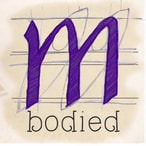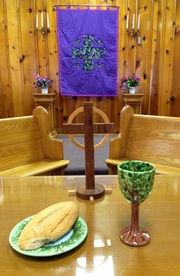|
Last night I had the privilege of leading a discussion at Theology on Tap – the Sunday School held on Thursday evening in our garage. We watched the Animate series in which Jose Morales compared the Bible to a library, with many different genres. Some of us gravitate toward poetry or letters like we listen to classical or rock and roll music. The Bible contains some of everything from law, parables, prophecy, gospel, apocalyptic literature, and more.
The question was posed, “If everything in the Bible is allegory or myth or a story that is supposed to lead us to understanding a greater message, then how to do we know what is “true?” Well, the answer is that historical fact does not equal big T “Truth.” We can boil the Bible down to say that “God is love” or “God wins.” Like any library, we have many resources from which to choose. Brian McLaren tells us that we need to read lectionary texts in conversation with the rest of the story in order to understand the full meaning of any one particular tale. Likewise, we must engage in conversation with others to help shape our own comprehension, our own questions, and give ourselves permission to wrestle with the mystery. And that’s what it is. Mystery. Sure, there are some historical facts in the Bible, but the collection of books is so much greater than that. Our faith is built on more than reciting Bible verses or picking texts apart with this or that criticism. The parts that we don’t know, can’t make sense of, are what shape our faith. Faith is believing in that which can’t be seen or touched or completely figured out. Thank you, God! Because I can’t know everything on my own, even though I may go to the library and check out books and do my research. I can pray and study scripture by myself, but in conversation with others, I can better articulate what I know to be “True.” In this time of Lent, we are all preparing for the Mystery of Easter. We know that Jesus was born, lived, and died on the cross, but we also know, in the words of Godly Play: “Easter turns everything inside out and upside down. The color of getting ready becomes the color of pure celebration. The sad seriousness and happiness join together to make joy.” The liturgical colors purple and white cannot point us to historical fact, but they can point to the truth of joy, the faith of believing in that, which is to come. I give thanks for conversation partners in this season and in every season of my life. Together, with the help of God, we can know and live the “Truth.” #ShapedByGod
0 Comments
Your comment will be posted after it is approved.
Leave a Reply. |
AuthorFormer international fashion model Rev. Sarah Renfro seeks to boost the body image of young women by educating them on the myths of media and focusing on divine within. She also preaches and teaches about marriage and divorce, motherhood, ministry, and mental illness. Archives
February 2020
|

